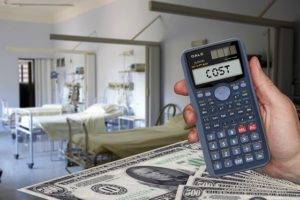
Table of Contents
The state of Arizona, with an average health insurance cost per individual at just over $6,000, has one of the most affordable health care insurance rates in the whole of the United States.
Though this figure is hundreds of dollars below the national average and 80% of enrollees have premium subsidies that significantly reduce their monthly premiums, Arizona’s uninsured remains above the national average.
The state uses the federal marketplace whereby residents buy insurance on Healthcare.gov. Being an Affordable Care Act-compliant state also means if you are a resident, you are required to have some form of health care insurance coverage by law.
Last year, 2021, about 155,000 Arizonans signed up for the Affordable Care Act plan thereby reducing the number of uninsured in the state. This is a step in the right direction as the American Public Health Association (APHA) in their Journal, has stated that health insurance should be portable and universally available to all.1
The Cost of Health Insurance in Arizona

There has been a 5% increase in the average monthly cost of health care insurance in Arizona and the current figure is $503.(source) This is the average cost for a 40-year-old man on an Affordable Care Act Silver plan. Needless to say, the older one gets the more the premium.
The cost also has a lot to do with the Metal tier level, your insurance company, your county, income level, size of household, etc.
Nonetheless, In Arizona, the cheapest catastrophic plan is Bright Health’s Catastrophic 8700 Direct while the cheapest bronze plan is the Ambetter Essential Care 1 offered by Health Net of Arizona, Inc. Share on X
The costs are decided by health care providers but they must be approved by regulators at the state and Federal levels. Regulation is essential to ensure health insurance keeps to its primary purpose which is to safeguard from unexpected medical bills as stated by the American Public Health Association(APHA).
The available health insurance providers
1. Blue Cross and Blue Shield of Arizona, Inc.: It was founded and has been operating since 1933. It’s a non-profit company that strives to improve the health of Arizonans through access to the health care they need. They currently offer the cheapest and most affordable silver plan in the whole of Arizona.
2. Bright Health Company of Arizona: This has a former CEO of UnitedHealthcare as one of its co-founders and expanded into Arizona around 2018. It currently offers the most affordable and cheapest catastrophic plan in all of Arizona.
3. Cigna HealthCare of Arizona, Inc.: They offer coverage in the Bronze, Silver, and Gold metal levels with a focus on your total health and wellness round the clock, according to them.
4. Health Net of Arizona, Inc.: They currently hold the most affordable or cheapest bronze plan in the whole of Arizona.
5. Oscar Health Plan, Inc.: The company was started in 2012 and just like the others, aims to see to it you get affordable and high-quality healthcare coverage.
6. UnitedHealthcare of Arizona, Inc.: It has been around since 1977 and offers coverage for pregnant women and newborns, children, adults, plus people with disabilities, including dual coverage for those who are eligible for Medicare and Medicaid.
If you are looking for affordable health care insurance in the bronze, Silver, or catastrophic plans in Arizona, the insurance companies highlighted in green are your best bet.
The Blue AdvanceHealth Silver – Neighborhood Network is the cheapest and most affordable silver health plan in 11 counties in Arizona. (source)
Kindly keep in touch by signing up for our newsletter:
How to get health insurance in Arizona
There are two periods you could acquire health insurance coverage in Arizona.
Open enrollment period (OEP).
This usually runs from the 1st of November to the 15th of January the following year. It offers the opportunity to buy through private insurers or the Federal exchange. Plans bought during the period are compliant with the Affordable Care Act and cover a list of 10 essential health benefits which are:
- Prescription drugs,
- mental health,
- Hospitalization,
- Laboratory services,
- Emergency services,
- Ambulatory services,
- Pregnancy, newborn, and maternity,
- Rehabilitation services.
- Pediatric services, and
- Management of chronic diseases and wellness.
Special enrollment period (SEP).

This could be at any other time of the year during which you could get short-term limited-duration health insurance (STLD). Before 2019 it was managed under strict state regulations but a bill was passed that made it conform to Federal guidelines.
Following this change, the short-term limited-duration health plan now runs for 364 days and can be renewed for up to 3 years or 36 months.
This is much better than that of Michigan which is limited to only 185 days and is nonrenewable except if you buy from another insurer at the end of the period of coverage.
The Short-term limited duration plans are not compliant with the affordable care plan and don’t provide all of the 10 essential benefits in health coverage, however, they could be essential in the following situations:
- You are waiting for employer-sponsored coverage to kick in.
- You missed out during the last open enrollment period (OEP)
- You are uninsured.
- You can’t afford a major medical coverage plan.
- You lost/left a job and hunting for one.
- You have outgrown the parental health plan on turning 26.
A special enrollment period is feasible only on the occurrence of qualifying life events some of which have already been listed above. Qualifying life events may also include Pregnancy or adoption, marriage, a change of location, or county.
Affordable individual and family health plans

The age difference between you and your spouse can have quite a significant impact on the cost of insurance as the rate could be determined using the age of the younger of a couple.
On that note, you may find it more affordable to apply together as a couple rather than as individuals if there is a significant age gap between you and your spouse. On the other hand, applying separately may turn out to be cheaper if the age difference isn’t much.
If you have a child that’s below 18 years and is ineligible for Medicaid, Arizona’s kidscare insurance program should be explored for low-cost and affordable child health insurance. This program was once unavailable but was re-opened in September 2016 and it’s Arizona’s own Children’s Health Insurance Program(CHIP).
The expanded Medicaid and programs such as Kidscare have significantly increased the use of medical care and reduced infant mortality according to the Quarterly Journal of Economics.2
In the kidscare program, you pay a premium of $50 monthly for one enrolled child but $70 for any number of children.
You can find out the cheapest silver health insurance policy that is available in your county right here.
The Arizona Health Care Cost Containment System (AHCCCS).

The state of Arizona Medicaid program is called the Arizona Health Care Cost Containment System which has been in operation since 1982. However, in 2014 this program was expanded in line with the Affordable Care Act by which an additional 426,000 Arizonans had access to free or low-cost health insurance.
This program is designed for people between the ages of 19 to 64 years whose income can be described as low or very low in addition to any of one of the following:
- A resident of Arizona,
- US national or citizen,
- Legal aliens,
- Presence of disability in your household.
- You are responsible for a 17-year-old or younger.
To be considered poor enough for this program, you are expected to have an annual income of not more than $17,131 for a single individual.
To calculate for families, you are to add the sum of $6,038 to the $17,131 for each dependent. That gives you the maximum household income that qualifies you for Michigan Medicaid.
For instance, for a family of 2, the maximum annual household income that qualifies for Medicaid is $23,169. This is the sum of $17,131 and $6,038. Then for a family of 3, you’ll have:
$17,131 + 2($6,038)= $29,207.
Being eligible for the AHCCCS means being ineligible for government subsidies. What this means is that private insurance will become pretty expensive without those subsidies, nonetheless, you are better off with the AHCCCS.
Though the age limit for eligibility into the AHCCCS program is 64 years, you could still be eligible at 65 years or older if you are the parent or caregiver of a child.
You are ineligible for the AHCCCS if you are eligible for Medicare but being the caregiver of a child could still make you eligible for the AHCCCS despite being eligible for Medicare. Taking advantage of dual Medicare and Medicaid eligibility could help you offset the cost of your health insurance.
In all of these, it appears the government of Arizona is sending signals for you to make more babies to replace an aging population! Share on X
How to get free health insurance
Just as it is in many other states, your surest bet in getting a free healthcare insurance plan is through the state’s healthcare cost containment system. In it, you don’t get to pay any monthly insurance premium and the copayment is pretty low, much lower than an employer-sponsored plan.
Though it typically targets people who are within the age range of 19 to 64 years who also aren’t eligible for Medicare, having a dependent child below 18 years changes the goalpost in your favor.
What that means is you could still qualify for the AHCCCS program even if you are up to 65 years, and above, and qualified for Medicare. Combining the AHCCCS and Medicare places you on the brightest spot in accessing affordable or free health care in Arizona Share on X
You may also be interested in knowing certain health conditions like breast cancer and cervical cancer for which health insurance plans are quite expedient.
References.
- Patricia M. Herman, Jill J. Rissi, and Michele E. Walsh, 2011:Health Insurance Status, Medical Debt, and Their Impact on Access to Care in Arizona
American Journal of Public Health 101, 1437_1443, https://doi.org/10.2105/AJPH.2010.300080 ↩︎ - Currie, J., & Gruber, J. (1996). Health Insurance Eligibility, Utilization of Medical Care, and Child Health. The Quarterly Journal of Economics, 111(2), 431-466. https://doi.org/10.2307/2946684 ↩︎































































































































































I was very pleased to find this web-site. I wanted to thank for you the time you spent putting up this wonderful read!! I definitely enjoyed every little bit of it and have this website bookmarked to check out any new stuff you post.